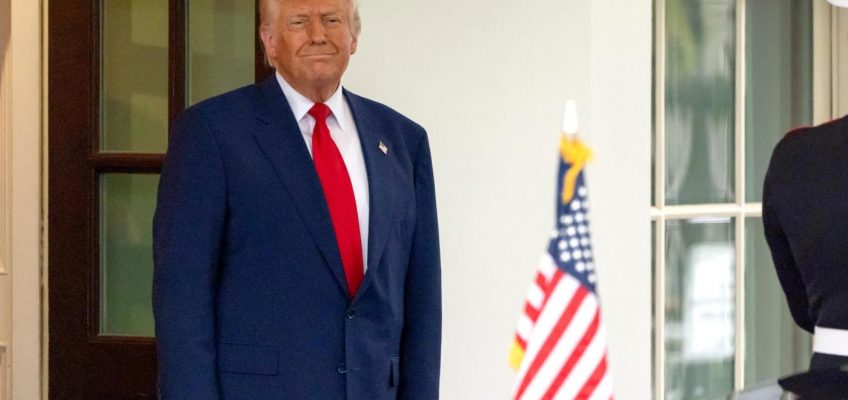By MICHELLE L. PRICE and LOLITA C. BALDOR
WASHINGTON (AP) — The Trump administration is having early discussions about a grand military parade in the nation’s capital this summer, something that is a long-held dream of President Donald Trump.
Related Articles
RFK Jr. says he plans to tell CDC to stop recommending fluoride in drinking water
Colleges around the US say some international students’ visas are being revoked
Maine sues the Trump administration over funding freeze after dispute over transgender athletes
Ohtani, Betts and World Series champion Dodgers visit Trump at the White House
Appeals court restores DOGE access to sensitive information at US agencies
D.C. Mayor Muriel Bowser said Monday that the administration had reached out to the city about holding a parade on June 14 that would stretch from Arlington, Virginia, where the Pentagon and Arlington National Cemetery are located, across the Potomac River and into Washington, D.C.
The Army is in early discussions about potentially adding a parade to the Army’s 250th birthday festival, which is being held June 14, according to a defense official who spoke on condition of anonymity because the discussions are ongoing and no decisions have been made.
June 14 is also Trump’s 79th birthday.
The White House in a statement said that “no military parade has been scheduled.”
The Army birthday festival, which has been in the planning stages for about two years, is to include an array of activities and displays on the National Mall, including Army Stryker armored vehicles, Humvees, helicopters and other equipment.
In a statement, Col. David Butler, an Army spokesman, said that “it’s too early to say yet whether or not we’re having a parade but we’re working with the White House as well as several government agencies to make the celebration a national level event.”
Trump in his first term proposed having a grand military parade in the U.S. after watching one in France on Bastille Day in 2017. Trump said after watching the two-hour procession along the famed Champs-Elysees that he wanted a grander one in Washington on Pennsylvania Avenue.
But the event never happened due to expected high costs, with one estimate of a $92 million price tag, and logistical hangups.
Trump in 2018 said in a post on the social media site then known as Twitter that he was canceling the event over costs and accused local politicians of price gouging.
“When asked to give us a price for holding a great celebratory military parade, they wanted a number so ridiculously high that I cancelled it,” he said in his post.
Bowser, speaking at a news conference Monday, said she didn’t know if the event was being “characterized as a military parade” but said military tanks rolling through the city’s streets “would not be good.”
“If military tanks were used, they should be accompanied with many millions of dollars to repair the roads,” she said.
Takis Karantonis, the chair of the Arlington County Board, said in a statement that Secret Service contacted the county on Friday “regarding the possibility of a military parade to celebrate the 250th Anniversary of the U.S. Army, but no further details were offered.”
Karantonis said it was not clear what the scope of the parade would be but said, “I would hope the Federal Government remains sensitive to the pain and concerns of numerous active military and veteran residents, who have lost or might lose their jobs in recent federal decisions, as they reflect on how best to celebrate the Army’s anniversary.”
Though Bowser was more matter-of-fact in her remarks Monday, the District of Columbia had publicly mocked the idea of a military parade during Trump’s first term.
The D.C. Council’s official account on X said in a January 2019 post about winter weather that schools and government offices would still open on time, but then added: “The Giant Tank Parade: Still cancelled.”
Months later, in June 2019, the account posted a Defense Department memo to show that the military opposed using tanks on city streets.
The latest parade plans were first reported by Washington City Paper on Sunday.
Associated Press writer Ashraf Khalil contributed to this report.




